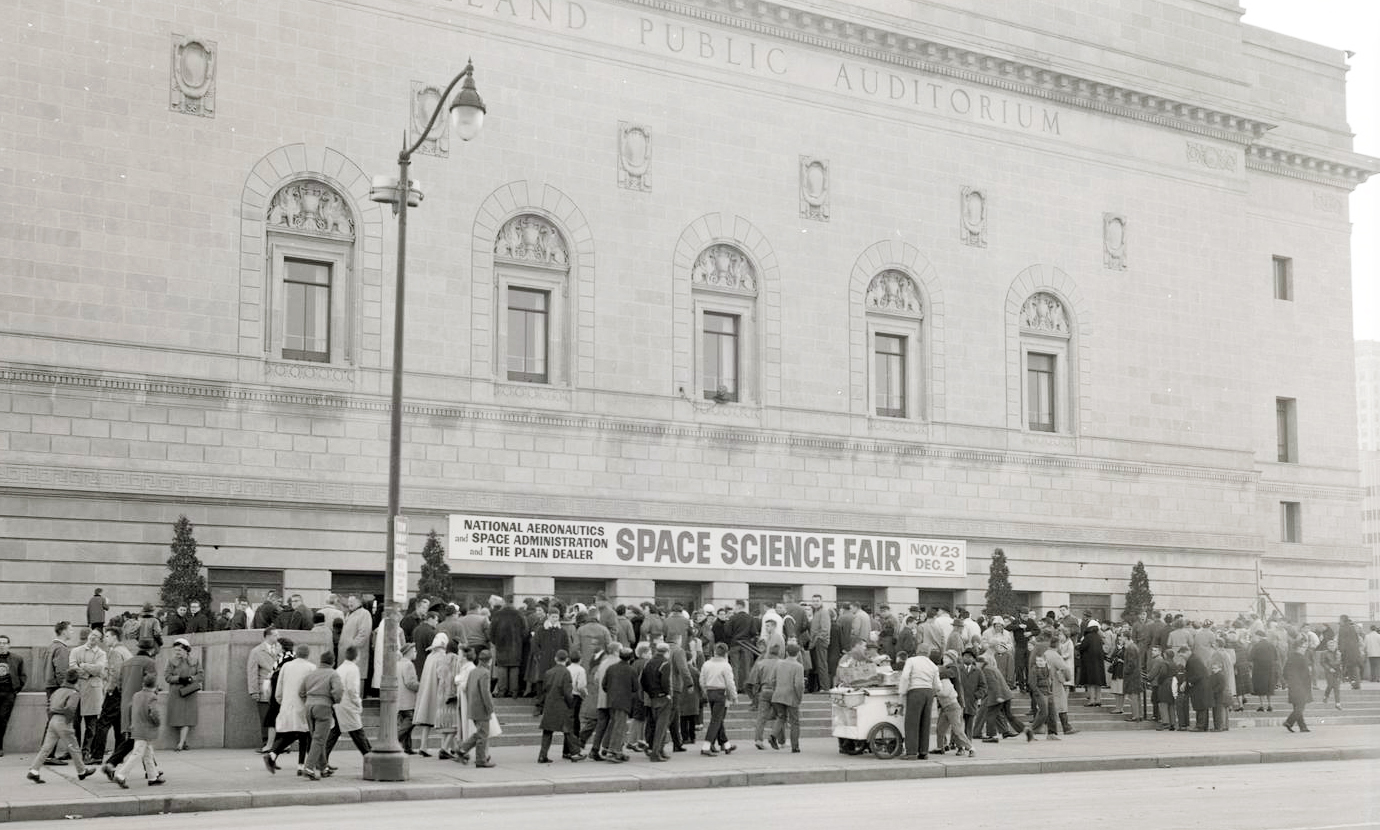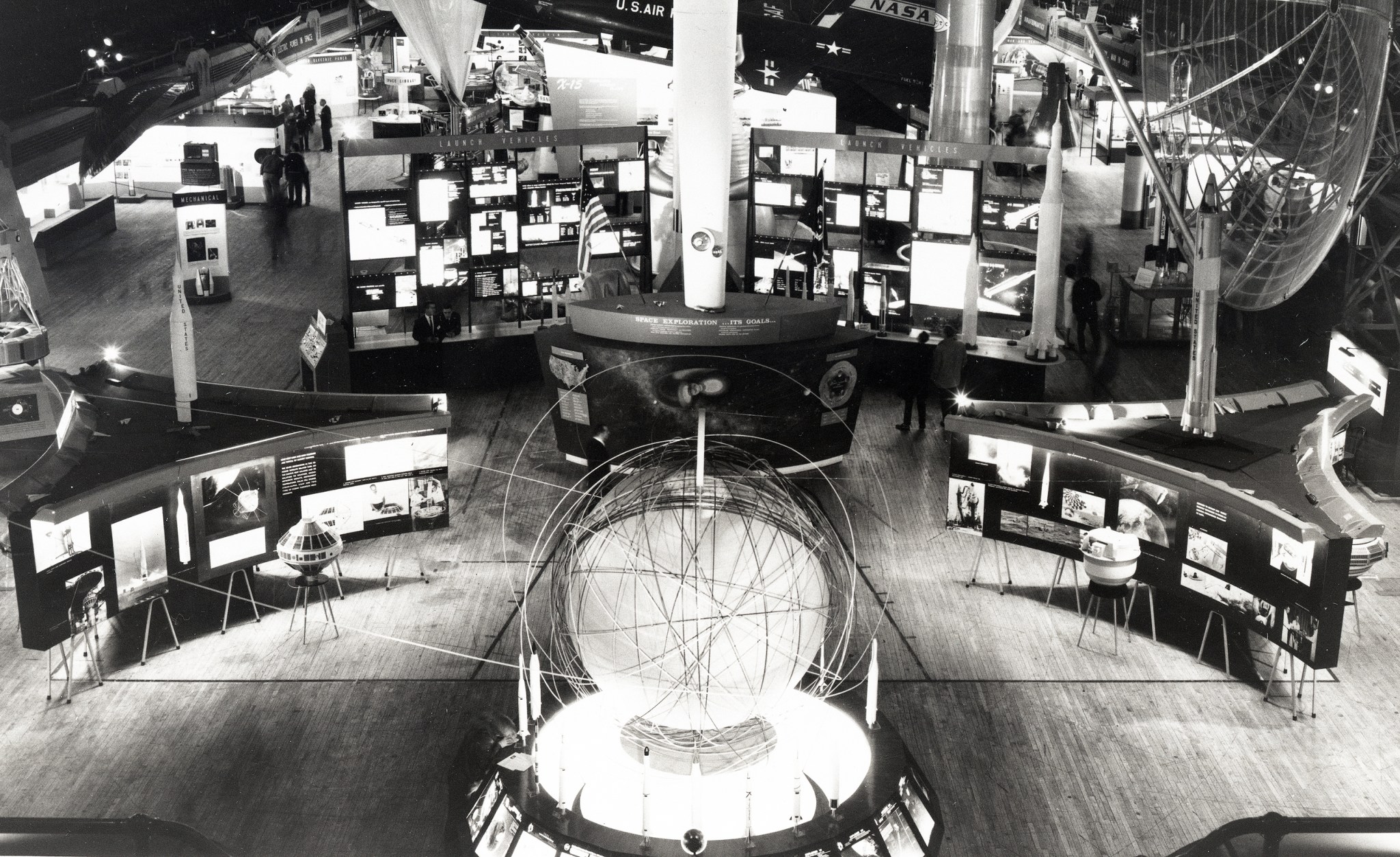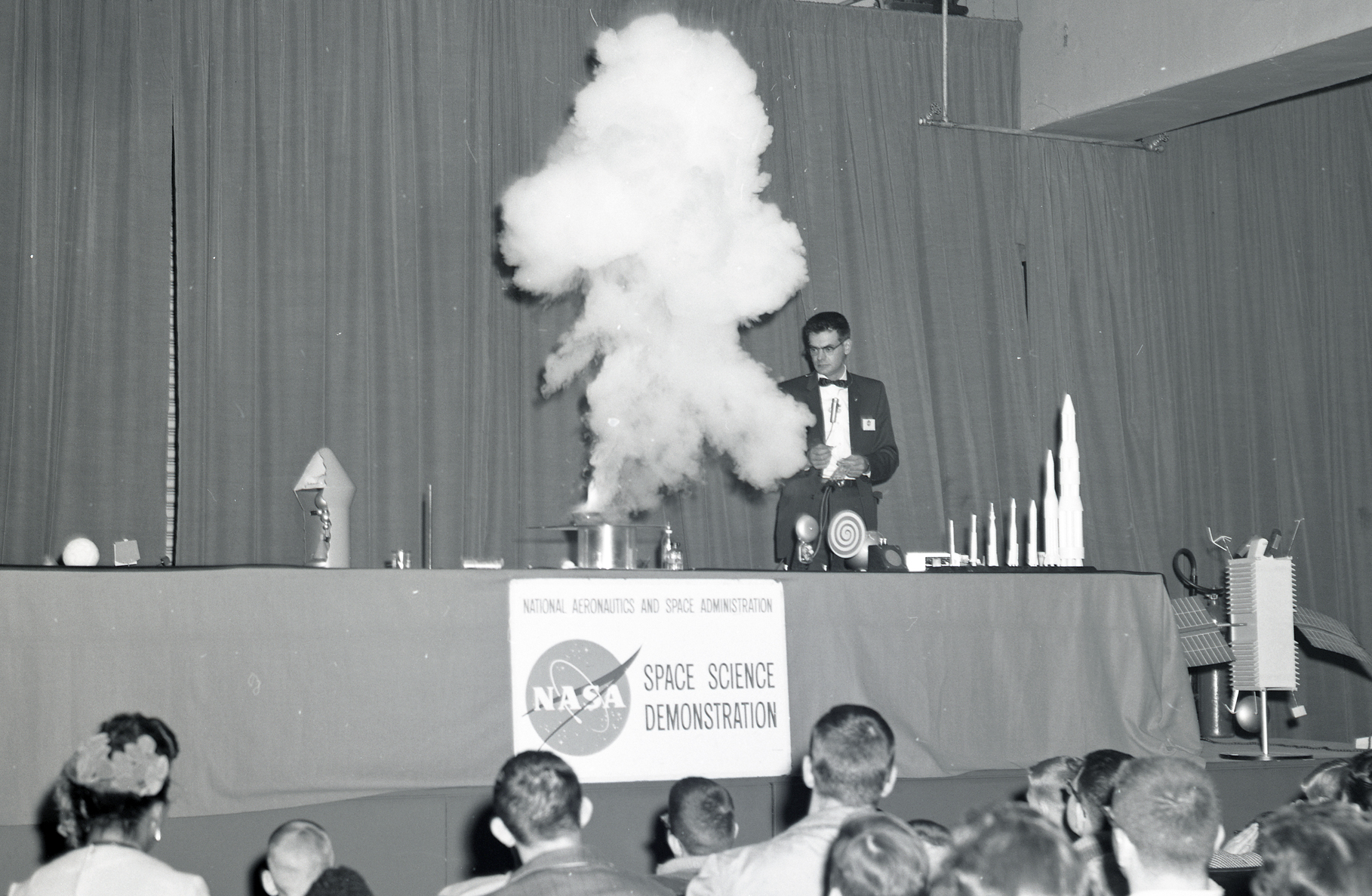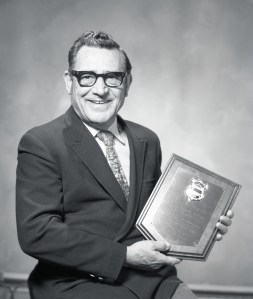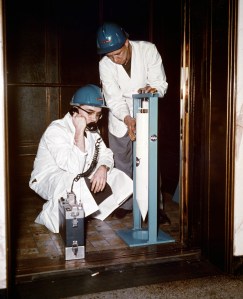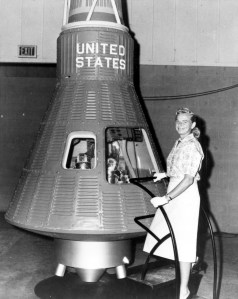On November 23, 1962, crowds, in the brisk morning air outside Cleveland Public Hall, formed lines around the block. At noon the doors opened, and the throng, including many students on holiday break, streamed into NASA’s largest public exhibition to date. It was an impressive start to the Space Science Fair–a 10-day space extravaganza sponsored by NASA and the Cleveland Plain Dealer.
Public interest in the new space agency was high with the Mercury missions and planning for Apollo in full-swing. Recently, President John F. Kennedy announced that the United States would land on the Moon during a speech at Rice University, Walter Schirra completed a record six Earth orbits, and NASA Lewis (now Glenn) assumed responsibility for the Centaur and Agena rockets.
On June 13, 1962, the Plain Dealer announced NASA’s most ambitious event to date—a 10-day Space Science Fair. The newspaper promoted the event, disseminated free tickets and provided educational materials. Lewis employees set up the displays and served as guides.
Attendees saw an illuminated 8-foot diameter globe near the entrance encircled by dozens of rings indicating the paths of all satellites then in orbit. Space hardware included Mercury and Gemini capsule models, Ranger and Mariner II spacecraft, an Echo satellite, and Lewis’ Gimbal Rig. The scores of large models included an X-15 Eagle, Atlas-Centaur, Scout, Saturn and Atlas-Mercury.
The fair also featured live demonstrations, films in balcony theaters, materials for teachers and career counselors. Large blocks of time were set aside for qualified students to attend a special Space Science Institute. Guests included test pilot Joe Walker, flight surgeon John Stapp and pilot Jerrie Cobb.
Sunday, November 25 was perhaps the most eventful day of the fair. It began with the arrival of 15,000 TRW Inc. employees in the morning. Over 25,000 others, many also attending Cleveland’s annual Christmas Parade or the Browns-Steelers football game, viewed the exhibits that day. In the evening, a black-tie dinner was held for 1,000 prominent northern Ohio leaders. Speakers included NASA officials Abe Silverstein, T. Keith Glennan, and Hugh Dryden, and, remotely, President Kennedy.
The Space Science Fair was a huge success for NASA and the city. Its 375,000 attendees, including 49,000 students, broke all previous Public Hall records.
Robert S. Arrighi
NASA’s Glenn Research Center
A longer version of this article appeared in NASA History News & Notes, Volume 36, Number 4, Fourth Quarter 2019.




























